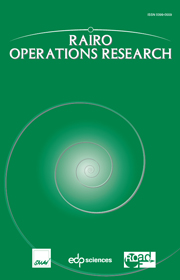Crossref Citations
This article has been cited by the following publications. This list is generated based on data provided by Crossref.
Angelelli, Jean-Baptiste
Baudot, Anaïs
Brun, Christine
and
Guénoche, Alain
2008.
Two local dissimilarity measures for weighted graphs with application to protein interaction networks.
Advances in Data Analysis and Classification,
Vol. 2,
Issue. 1,
p.
3.
Gambette, Philippe
and
Guénoche, Alain
2011.
Bootstrap clustering for graph partitioning.
RAIRO - Operations Research,
Vol. 45,
Issue. 4,
p.
339.
Guénoche, Alain
2013.
Graph Partitioning.
p.
275.


